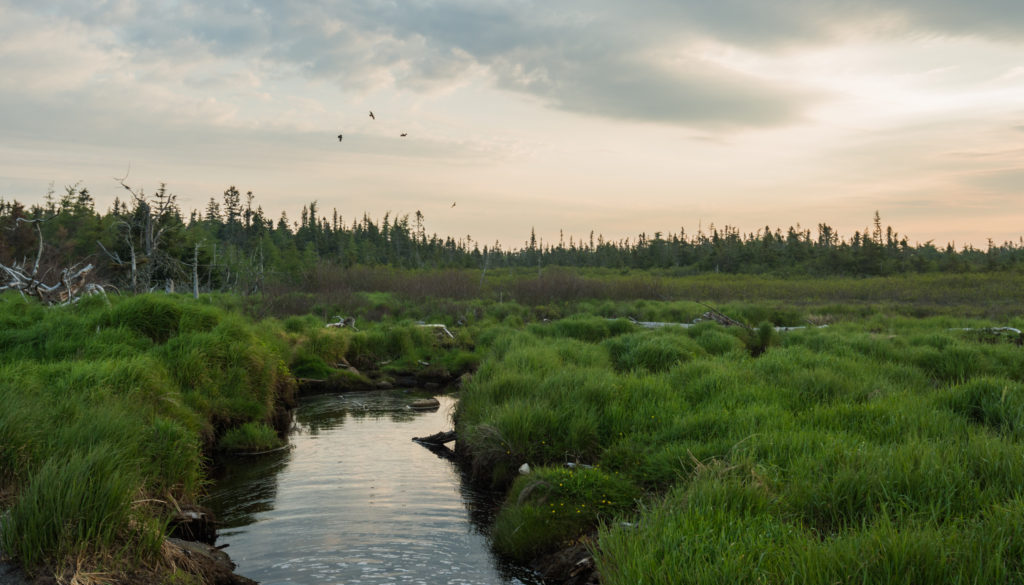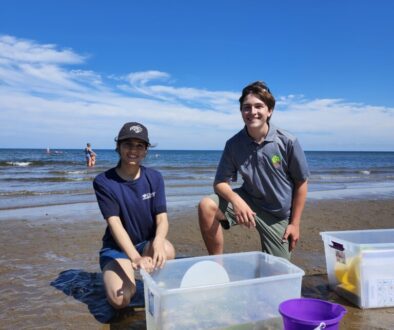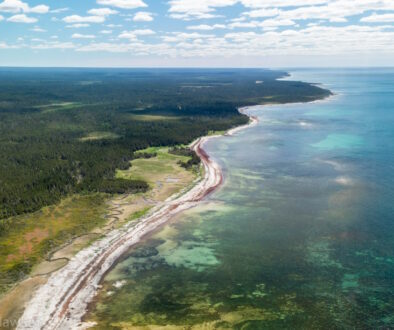Getting Protected Areas Right
We had big news last week at CPAWS-NB! Maybe you heard that the Province of New Brunswick just announced their commitment to protecting 10% of our province by 2020? In a province where there is currently less than 5% coverage of protected areas, more than doubling this amount is a significant and exciting move! Creating new protected areas can help to keep plants and animals thriving, ecosystems vibrant, and our communities more resilient to climate breakdown.
Despite their many benefits, not all protected areas are created equal – depending on how and where protected areas are designed, they might be very effective or not effective at all in protecting wildlife, habitats, and ecosystems. Science has given us all kinds of important information on how protected areas should be designed, with advice ranging from simplistic to much easier said than done. To get the ball rolling in New Brunswick, we’ve summarized some of the science into five qualities of good protected areas that do what they’re meant to do: protect nature!

1. Protect something worth protecting – It might sound straightforward, but this is a critical first step in creating a new protected area: deciding where it should go. It’s easy to protect areas that are far away from humans and don’t contain many of the resources we like to harvest, but often the areas that most need protecting are ones that include humans and our activities. To design a good protected area, we need to choose an area that is worthy of protection – one that has the diverse species and habitats that make ecosystems function so well; one that has endangered species needing conservation attention; or one that has species and ecosystems unique to our region. In New Brunswick, we need to increase our coverage to a meaningful 10% that protects our natural spaces and the way they work.
2. Create a buffer from threats – We’ve seen it before: a protected area is created that limits the types and amount of activities we can do in an area, but those activities are all allowed just outside the boundary. The problem is that wildlife don’t know about this boundary, and ecosystem processes happen across a much wider area. It’s important to create a protected area that gradually increases human activities beyond the boundary, sometimes called a “buffer zone”, giving wildlife an opportunity to adapt their behaviours and creating a core zone in the protected area where conservation benefits are plentiful.

3. Think about the bigger picture – It’s not enough to think about a single protected area in isolation. Science tells us that many protected areas have more benefits than few. We also know that a “network” of protected areas, where many protected areas are designed to work together to provide even greater benefits, are one of our best tools for conservation. When designing protected areas, we need to think about the bigger picture of conservation. How can our protected areas work together to ensure healthy ecosystems across the province? How can we limit our activities to give wildlife the best chance of survival across our municipalities and into our neighbouring provinces? These are questions we can ask as we build from 5% to 10% protected areas in New Brunswick.
4. Create an enabling conservation community – At the end of the day, it is up to people to make good choices for nature and to bring our protected areas to life. A good protected area is one built on good governance where laws and policies enable strong conservation action. Designing new protected areas in our province will need lots of collaboration from a community who can work together toward our conservation goals, creating protected areas that get the conservation job done.

5. Protected areas today for tomorrow – There’s no doubt about it: as climate continues to breakdown, things in our province are going to change – and this matters for the protected areas we create now. While we might be creating protected areas for 2020, we need to be thinking about what these will look like, and how they might be adapted, in 2021, 2030, and beyond. As environments change and wildlife shift in response to climate change, our protected areas may become more or less effective. New protected areas should be planned with the future in mind, ensuring that our conservation efforts remain effective and continue to protect wildlife and ecosystems in years to come.
With 2020 just around the corner, it is time to get to work! Our team at CPAWS-NB is eager to work together with governments, Indigenous Peoples, our fellow environmental non-profit organizations, and New Brunswickers to get this protected area story right. New Brunswick has an opportunity to do the conservation work that’s needed and do it well, leading by example in protecting the places that make Canada’s ecosystems so special.
Want to help? Tell your local representative that we need to keep the momentum going toward strong and effective protected areas. Sign your letter here!
Listen to what our Executive Director, Roberta Clowater, has to say about the province’s announcement last week here.
Header photo by Nick Hawkins

Julie Reimer is a PhD student at the Memorial University of Newfoundland and a Board Member of CPAWS-NB. Having worked in the whale watching industry in New Brunswick and conducted her Master’s research on conservation planning for the North Atlantic right whale, Julie is an advocate for MPAs in New Brunswick. Julie’s current research attempts to see the “bigger picture” of conservation, reaching beyond protected areas to understand the synergies between conservation actions and ocean industries. To connect with Julie, visit http://juliereimer.wixsite.com/hello.



